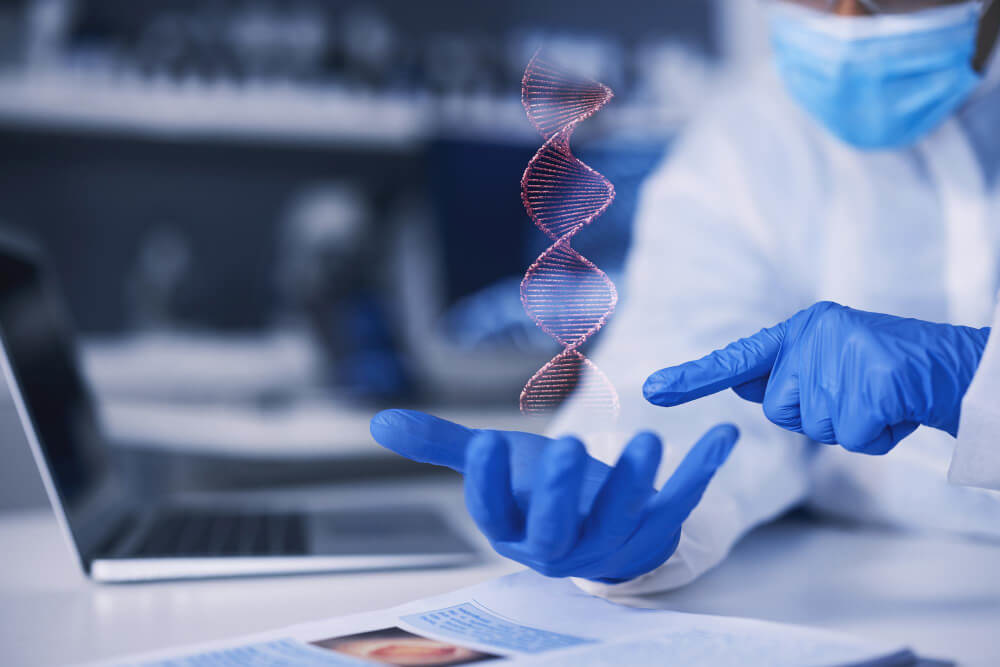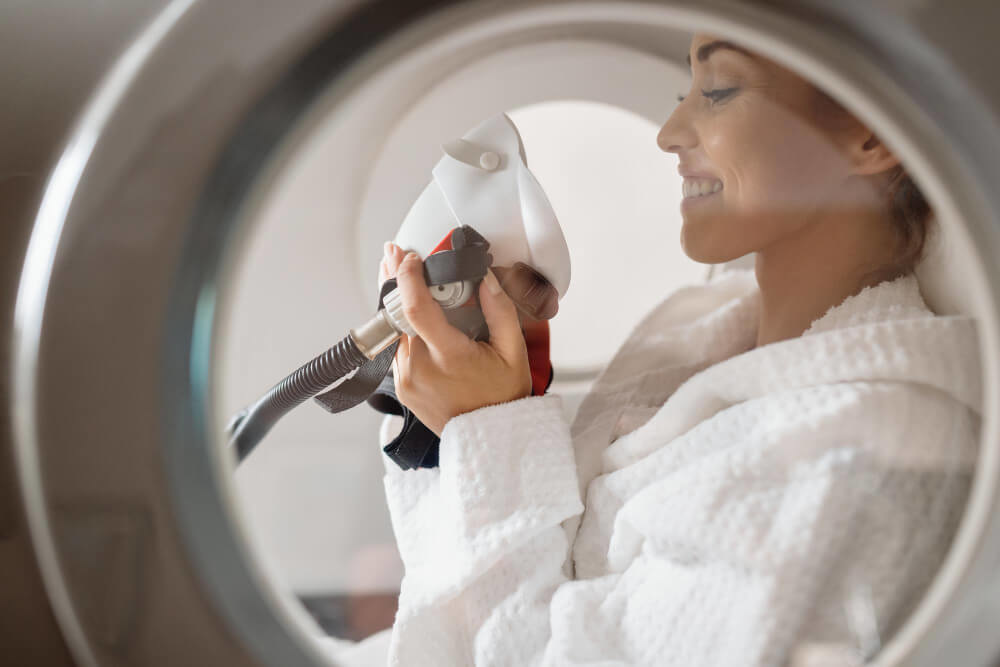Regenerative Medicine: Unlocking Your Body’s Healing Potential
Imagine a world where medicine does more than just manage symptoms. Picture a healthcare approach that doesn’t just put a bandage on a problem but instead provides your body with the tools it needs to truly heal from the inside out. This isn’t a futuristic fantasy; it’s the core principle behind one of the most exciting and rapidly evolving fields in modern science.
This revolutionary field is a branch of translational research that focuses on repairing, replacing, or regenerating human cells, tissues, or organs to restore normal function. It represents a fundamental shift away from the traditional disease-management model toward one of restoration and rejuvenation. At its heart, it seeks to unlock and amplify the incredible healing capacity that already exists within each of us.
By harnessing the power of your own biological systems, regenerative medicine offers a new frontier of possibilities for treating injuries, chronic conditions, and the effects of aging. It’s a personalized, proactive approach to health that is changing how we think about recovery and longevity.

What Exactly is Regenerative Medicine?
At its core, regenerative medicine is a diverse and interdisciplinary field. It combines biology, chemistry, genetics, and clinical medicine to find solutions for some of the most challenging health problems. The primary goal is to address the root cause of a disease or injury, rather than simply alleviating the symptoms it produces.
Think of it this way: if a part of your body is damaged, traditional medicine might offer a painkiller to mask the discomfort or surgery to remove the damaged part. Regenerative medicine, on the other hand, asks if it’s possible to help the body repair that damage itself. It aims to create living, functional tissues to restore proper function lost through age, disease, or trauma.
This is accomplished using a variety of sophisticated tools and techniques. These include stimulating the body’s own repair mechanisms, using therapeutic stem cells, and applying tissue engineering principles to create functional replacements. It’s a dynamic approach that is constantly evolving as our understanding of human biology deepens.

How Does It Differ From Traditional Medicine?
The fundamental difference lies in the objective. Traditional medicine has largely focused on managing chronic diseases or performing surgical interventions. For example, a person with severe knee arthritis might be prescribed anti-inflammatory drugs for years, eventually leading to a full knee replacement with an artificial joint.
Regenerative medicine offers a different path. Instead of replacing the joint with metal and plastic, the goal would be to repair the damaged cartilage and reduce inflammation using the body’s own healing components. This approach seeks to restore the original tissue, preserving the natural anatomy and function of the joint.
This represents a paradigm shift from intervention to restoration. It’s less about fighting disease and more about fostering health. The therapies are often minimally invasive and designed to work in harmony with the body’s natural processes, potentially reducing the risk of complications associated with more aggressive treatments.

What Are the Core Principles of This Field?
Regenerative medicine is built upon several key pillars of scientific innovation. These principles work together to create therapies that are both powerful and personalized. Understanding these concepts helps clarify how this new form of medicine achieves its remarkable results.
Each pillar represents a distinct area of research and clinical application, but they often overlap. A successful therapy might involve using a patient’s own cells, placing them on a supportive biomaterial, and implanting them to regenerate damaged tissue. This synergy is what makes the field so promising.

Can We Really Use Our Own Cells for Healing?
Yes, this is one of the most foundational concepts. Your body contains powerful cells that are instrumental in healing and maintenance. The two most commonly utilized components are stem cells and platelets.
Stem cells are often called the body’s ‘master cells’ because they are undifferentiated, meaning they have the potential to develop into many different types of cells, such as cartilage, muscle, or bone. Mesenchymal stem cells (MSCs), often sourced from bone marrow or adipose (fat) tissue, are particularly important. They can not only differentiate into new tissues but also release powerful signaling molecules that reduce inflammation and recruit other healing cells to an area of injury.
Another key player is Platelet-Rich Plasma, or PRP. Platelets are cell fragments in your blood best known for their role in clotting. However, they are also packed with hundreds of growth factors, which are proteins that act as signals to initiate tissue repair. To create PRP, a small sample of a patient’s blood is spun in a centrifuge to concentrate these platelets. The resulting PRP is then injected directly into the injured area to supercharge the natural healing cascade.

What is the Role of Tissue Engineering?
Tissue engineering is a more advanced aspect of the field that sounds like it’s straight from science fiction. It involves growing new tissues and even organs in a laboratory for implantation. This is often done using a combination of cells and a scaffold.
A scaffold is a supportive structure, often made of a biocompatible material, that is shaped like the tissue you want to grow. Cells, either from the patient or a donor, are ‘seeded’ onto this scaffold. Inside a special incubator called a bioreactor, which mimics the conditions of the human body, the cells multiply and organize themselves into functional tissue.
While the creation of complex organs like hearts or livers is still in the research phase, simpler tissues like skin, cartilage, and bladders have been successfully engineered and used in patients. This technology holds immense promise for the future, potentially eliminating the need for organ donor lists.

How Do Biomaterials Support Regeneration?
Biomaterials are substances that have been engineered to interact with biological systems for a medical purpose. In regenerative medicine, they often serve as the aforementioned scaffolds, providing a temporary framework that supports new tissue growth. These materials are designed to be biocompatible, meaning they don’t cause a harmful immune response, and are often biodegradable.
As the new tissue grows and matures, the scaffold slowly and safely dissolves, leaving only the healthy, regenerated tissue behind. These materials can be natural, like collagen or hyaluronic acid, or synthetic polymers. They can even be designed to release growth factors or other therapeutic agents over time to further enhance the healing process.

What Conditions Can Regenerative Medicine Potentially Address?
The applications for regenerative therapies are vast and continue to expand as research progresses. What started with a focus on specific injuries has now grown to encompass a wide range of health concerns, from chronic pain to systemic diseases.
It is important to note that while the potential is enormous, many applications are still considered investigational. However, for certain conditions, regenerative approaches have become a mainstream option offered by leading medical centers around the world.

Can It Help With Joint Pain and Orthopedic Issues?
This is perhaps the most well-known and established application. For individuals suffering from osteoarthritis, tendonitis, ligament sprains, or muscle tears, regenerative therapies offer a compelling alternative to long-term medication use or surgery. Conditions like knee pain, tennis elbow, rotator cuff tears, and plantar fasciitis are commonly treated.
In these cases, injections of PRP or stem cell concentrate can help reduce the chronic inflammation that drives pain and tissue breakdown. More importantly, the growth factors and cells in the injection can stimulate the repair of damaged cartilage, tendons, or ligaments. This focus on healing the underlying injury can lead to lasting pain relief and improved function. For those seeking deeper knowledge on this topic, many specialists in orthobiologics provide excellent resources, and a great place to start is The Orthobiologic Institute.

What About Chronic Conditions and Autoimmune Diseases?
This is a frontier of active research and great hope. For conditions where the body’s own immune system attacks its tissues, regenerative medicine aims to modulate this faulty immune response and repair the resulting damage. The anti-inflammatory and immunomodulatory properties of mesenchymal stem cells are of particular interest here.
For example, researchers are exploring how these therapies might help patients with conditions like Crohn’s disease or ulcerative colitis, which are forms of inflammatory bowel disease (IBD). The goal is to calm the overactive immune response in the gut and promote the healing of the intestinal lining. A comprehensive view of this requires looking beyond single therapies, which is why many practitioners explore integrative and functional medicine strategies for IBD in conjunction with regenerative techniques.

Is It Used in Aesthetics and Anti-Aging?
Yes, the principles of regeneration are also being applied to aesthetics and skin health. The goal is to rejuvenate the skin and combat the visible signs of aging by stimulating the body’s own production of collagen and elastin, the proteins that give skin its youthful structure and elasticity.
Treatments like PRP therapy for hair restoration work by stimulating dormant hair follicles to re-enter the growth phase. The popular ‘vampire facial’ combines microneedling with the application of PRP. The microneedling creates tiny channels in the skin, and the PRP’s growth factors penetrate deeply to promote cell turnover, improve skin texture, and reduce fine lines. This taps into the body’s innate ability to repair and renew itself.

What Does the Future of Healing Look Like?
The future of regenerative medicine is incredibly bright, with advancements happening at a breathtaking pace. Scientists are working on ‘off-the-shelf’ cell products that would not require harvesting from the patient, making treatments more accessible and standardized. The field of 3D bioprinting continues to mature, bringing the possibility of printing custom organs on demand closer to reality.
Personalized medicine is another key aspect of the future. By analyzing a patient’s genetic makeup and specific disease markers, doctors will be able to tailor regenerative therapies for maximum effectiveness. This will move us further away from a one-size-fits-all approach to a truly individualized form of healthcare. The global conversation on these advancements is constantly moving forward, with key developments often presented at events like the World Stem Cell Summit, where top minds gather to share progress and chart the future.

How Do You Find a Qualified Practitioner?
As with any advanced medical field, the skill and expertise of the practitioner are paramount. Finding a qualified provider is crucial for ensuring a safe and effective treatment. A qualified doctor will conduct a thorough evaluation, including a physical exam and imaging like MRI or ultrasound, to determine if you are a good candidate.
Look for physicians who are transparent about their training, the types of products they use, and the evidence supporting their treatments. Top-tier medical institutions are deeply involved in this space, offering specialized training and education programs to ensure high standards of care. For instance, leading universities are paving the way by creating dedicated programs, and you can see examples of this through the regenerative medicine education at Stanford Medicine. Reputable clinics will be part of this ecosystem of continuous learning and professional development.
It is also beneficial to seek out practitioners who have completed rigorous training from respected organizations. Professional bodies dedicated to this specialty provide comprehensive education and hands-on training for physicians. One such example is the Academy of Regenerative Practices, which is committed to advancing the field through high-quality education and clinical standards.

Are Regenerative Procedures Always Successful?
This is a critical and honest question. Like any medical procedure, success is not guaranteed. The outcome of a regenerative treatment can depend on many factors, including the patient’s age, overall health, the severity of the condition, and adherence to post-procedure protocols. A 25-year-old athlete with an acute tendon injury will likely respond differently than an 80-year-old with advanced, bone-on-bone arthritis.
Managing expectations is a key role of an ethical provider. They should discuss the potential benefits as well as the limitations of the therapy for your specific situation. A successful outcome also relies heavily on what happens after the procedure. This includes physical therapy, nutritional support, and lifestyle modifications that create an optimal environment for healing.
When a procedure does not yield the expected results, a skilled clinician will have a process for re-evaluation. Understanding the nuances of patient selection and post-procedure care is essential, making it important for both patients and providers to understand how to approach a situation with less-than-ideal results. This is why a focus on troubleshooting poor outcomes in regenerative procedures is a mark of a mature and responsible practice.

How is This Field Regulated and Marketed?
The regulatory landscape for regenerative medicine is complex and evolving. In the United States, the Food and Drug Administration (FDA) provides oversight to ensure that therapies are safe and effective. The level of regulation depends on how the cells or tissues are processed and what claims are made about their use. This oversight is crucial for patient safety.
Unfortunately, the excitement surrounding regenerative medicine has also attracted some clinics that make exaggerated or unsubstantiated claims. These ‘bad actors’ can mislead patients and undermine the credibility of the entire field. It is vital for patients to be discerning consumers and to be wary of practices that promise miracle cures or use high-pressure sales tactics.
Ethical marketing is a cornerstone of a reputable practice. It focuses on educating patients, setting realistic expectations, and providing transparent information about the procedures, costs, and scientific evidence. Learning how to market a regenerative medicine practice ethically is a critical skill for providers who want to build trust and contribute positively to this growing field of medicine.
Regenerative medicine is more than just a collection of new treatments; it’s a new way of thinking about the human body. It sees the body not as a machine that breaks down but as a living system with a remarkable, inherent ability to heal itself. By learning to speak the language of our cells, we are opening the door to a future where we can restore function, alleviate suffering, and truly enhance human health and longevity.
This journey into the body’s own healing power is just beginning. As science continues to unravel the complex symphony of biological repair, the potential for regenerative medicine will only continue to grow, offering hope and new possibilities for millions of people around the world.
Frequently Asked Questions

How does the work done in a clinical lab for product characterization differ from its role in routine patient diagnostics?
While both functions operate within a highly regulated environment, their core objectives are fundamentally different. In routine patient diagnostics, the lab’s primary goal is to analyze a patient sample to inform a diagnosis, monitor a disease, or guide treatment for that specific individual. For product characterization, the focus shifts from the patient to the therapeutic product itself, assessing its intrinsic physicochemical and biological properties to ensure it is safe, pure, and potent.
This difference in objective dictates the nature of the testing performed. Product characterization often involves a wider array of sophisticated analytical techniques to establish a comprehensive profile of the drug substance, such as its structure, stability, and mechanism of action. In contrast, diagnostic testing is typically optimized for high throughput, rapid turnaround time, and clinical relevance to a patient’s immediate health status.

What specific types of data does a clinical lab provide to support a product’s regulatory submission?
A clinical lab provides a crucial data package that forms the backbone of the Chemistry, Manufacturing, and Controls (CMC) section of a regulatory filing. This data includes detailed information on the product’s identity, confirming it has the correct molecular structure, and its purity, quantifying any process-related or product-related impurities. The lab also performs potency assays to measure the product’s specific biological activity, which is a critical indicator of its therapeutic efficacy.
This comprehensive dataset is used to establish the product’s quality attributes and set acceptance criteria for manufacturing. Regulatory bodies like the FDA and EMA scrutinize this information to verify that the manufacturer can consistently produce a product that is safe and effective batch after batch. Without this robust characterization data demonstrating control over the final product, a therapeutic cannot gain marketing approval.

Does the clinical lab’s involvement in characterization end once a drug is approved and on the market?
No, the clinical lab’s role is critical throughout the entire product lifecycle and extends well beyond initial approval. Post-approval, the lab is responsible for routine quality control (QC) and lot release testing for every manufactured batch. This ensures that each new lot of the product continues to meet the exact specifications that were established during development and approved by regulators.
Furthermore, the lab plays a vital role in managing any post-approval changes to the manufacturing process. If a manufacturer needs to scale up production or modify a step, the lab must conduct comparability studies to prove the resulting product is equivalent to the originally approved version. This ongoing characterization work is essential for ensuring the long-term safety, quality, and efficacy of the product available to patients.
Are you ready to be at the forefront of this medical revolution? For healthcare professionals, medics, and clinic owners, mastering these advanced protocols is no longer optional—it’s essential for providing next-generation care. At Talking Longevity, you can discover the most comprehensive functional medicine training, longevity training, and biohacking certification programs designed specifically for you. Master regenerative medicine protocols and anti-aging therapies to transform your practice and the lives of your patients.







